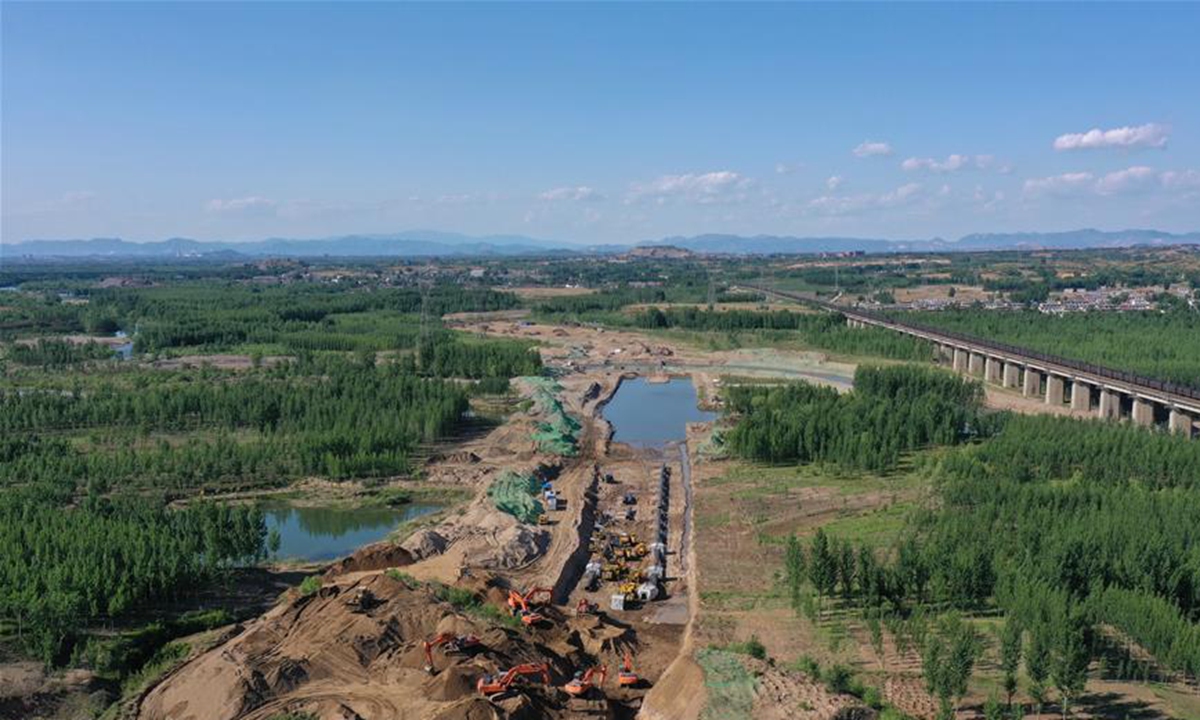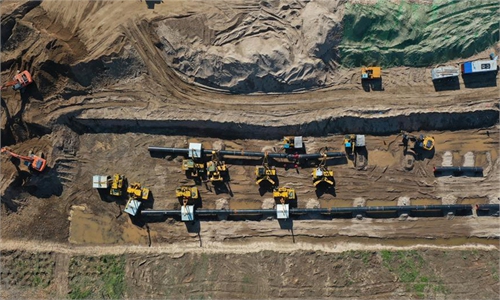
Aerial photo taken on June 4, 2020 shows the construction site of the Changling-Yongqing section of the China-Russia east-route natural gas pipeline in Youzha Township of Luanzhou City, north China's Hebei Province. (Xinhua/Yang Shiyao)
China officially began the world's largest tunnel construction under a major river on Tuesday, kick starting the construction of the 1,509-kilometer-long southern Chinese section of the China-Russia east-route natural gas pipeline.
A Chinese oil industry analyst said the project will help cushion rising geopolitical risks.
The tunnel under the Yangtze River is a key project of the southern Chinese section of the pipeline, which will connect Yongqing in North China's Hebei Province with the economic hub of Shanghai.
The China Oil & Gas Piping Network Corporation, the national oil and gas pipeline company launched late last year, said that after the key project is completed by June 2025, annual throughput will reach 18.9 billion cubic meters per year.
Energy traffic in the Yangtze River Delta will be immensely improved, with imported Russian natural gas meeting civilian and industrial demand in the region, the company said.
"[The construction] is spot on, as the pipeline project will strengthen China's energy security given the rising tensions with the US that may impede China's maritime energy transportation," Jin Lei, an associate professor at the Beijing-based China University of Petroleum, told the Global Times.
With Russian gas passing through Northeast China's old industrial base and the manufacturing clusters in the eastern coastal regions, China's industrial production could become more environmentally friendly, Jin said.
"The announced throughput of 18.9 billion cubic meters per year is way higher than the minimum designed capacity of 10 billion cubic meters per year so the reading is positive, but it also leaves room to extend to the maximum designed capacity of 30 billion cubic meters per year later when demand picks up," Jin said.
The tunnel will have an inner diameter of 6.8 meters and extend to a length of 10.23 kilometers under the Yangtze River near Nantong, a city in East China's Jiangsu Province.
Three pipelines, each with a diameter of 1.42 meters, will go through the tunnel.
After the project is completed, cleaner-burning natural gas imported from Russia will help the region reduce carbon dioxide emissions by 81.44 million tons each year.
In December 2019, the northern Chinese section of the pipeline was put into operation. The central part of the pipeline, linking Yongqing and Changling in Northeast China's Jilin Province, will be completed by end of this year. In total, 1,243 kilometers of the 1,509-kilometer southern section will be new pipeline.
Global Times



